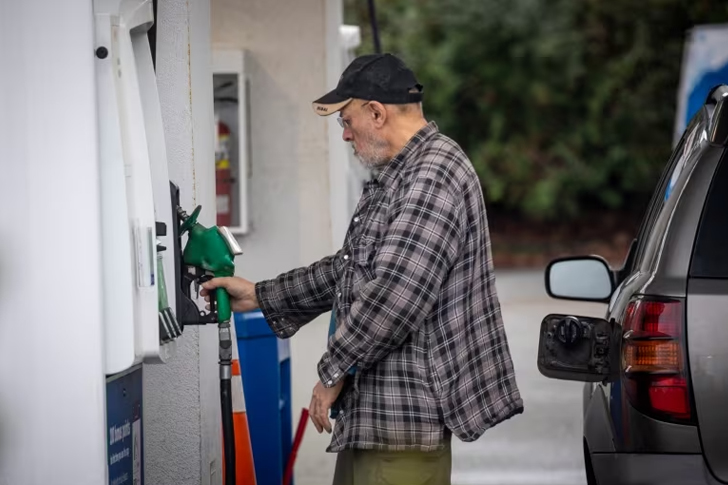Understanding Gas Rebate Cards: Benefits When Refueling
Rising fuel prices are a significant concern for many drivers today. As gasoline prices fluctuate frequently, managing fuel expenses becomes a crucial aspect of maintaining a budget. One effective tool for managing these costs is the use of gas rebate cards. These cards, offered by various credit card companies and specific gas stations, can help consumers save significantly on their fuel purchases. This article explores the benefits and considerations of using gas rebate cards for refueling.

What Are Gas Rebate Cards?
Gas rebate cards are a type of credit card specifically designed to offer rewards and savings when used to purchase gasoline. These cards can be branded by specific fuel companies or general credit card issuers and provide cash back, points, or discounts on each gallon of fuel purchased. The typical savings can range from 2% to as much as 5% back on fuel purchases. Some cards also offer introductory benefits like a higher cashback rate for the first few months or a sign-up bonus.
Types of Gas Rebate Cards
There are primarily two types of gas rebate cards: branded fuel cards and general credit cards with gas rewards. Branded fuel cards, such as those offered by Shell, BP, or Chevron, are meant to be used at specific gas stations and often provide greater rewards when purchasing their brand of fuel. Conversely, general credit cards might offer cash back on gas purchased at any station, which offers more flexibility regarding where you can refuel. Deciding between these depends on one’s driving habits and brand preference.
Benefits of Using Gas Rebate Cards
One of the primary benefits of using a gas rebate card is the direct cash savings. For instance, saving 5% on gas purchases can significantly accumulate over time. Considering the average American driver spent about $2,000 on gasoline in 2021, a 5% rebate could translate to $100 in annual savings. Additionally, many gas rebate cards do not just limit rewards to gas purchases; they often include categories like groceries and dining, further increasing potential savings.
Beyond the monetary benefits, using these cards can also simplify expense tracking. By using one card specifically for gas and related travel expenses, it’s easier to monitor how much you’re spending on fuel each month without sifting through other unrelated expenses.
Potential Downsides and Considerations
However, there are considerations to keep in mind when using gas rebate cards. Some cards come with annual fees that might offset the savings unless you spend a significant amount on gas. Furthermore, interest rates for these cards can be high, making it important to pay off balances each month to truly benefit from the rebates.
Another factor to consider is the price sensitivity of fuel. For drivers in regions where gas prices are exceptionally high, the percentage-back on a gas rebate card can result in more meaningful savings. However, in areas with relatively low fuel costs, the benefits might not be as substantial unless coupled with high fuel consumption.
Maximizing Benefits with Gas Rebate Cards
To maximize the benefits of gas rebate cards, it’s crucial to select a card that aligns with your specific needs and habits. For instance, if you frequently travel and are not particularly loyal to any gas station, a general credit card with rewards for fuel purchases at any station might be the best choice. On the other hand, if you consistently visit the same gas station for fuel, a branded gas station card could offer more robust rewards.
Additionally, keep an eye on the terms of the rebate offers. Some cards may require a minimum spend to unlock the rewards or could have caps on the amount of cash back you can earn. Ensuring you understand these details can help in picking the most beneficial card and avoid any surprises.
Combining Gas Rebate Cards with Other Discounts
Beyond just the rebate card itself, further savings can be achieved by combining the card’s benefits with other discounts. Many gas stations offer their own loyalty programs or promotional discounts which can be stacked with the savings from your gas rebate card. Additionally, apps and websites that track gas prices can help you determine when and where to fill up to optimize savings.
Conclusion
In conclusion, gas rebate cards are a fruitful way to reduce fuel expenses significantly. By choosing the right card and using it strategically, drivers can ease the pressure of rising fuel costs. However, it’s essential to weigh the benefits against any potential costs such as annual fees and interest rates. With careful selection and usage, gas rebate cards can turn every trip to the pump into a more money-saving experience.
Whether you opt for a branded card or a general rewards card, the key to making the most of a gas rebate card is to understand your driving and purchasing behavior, and to stay informed about the terms and opportunities of your chosen rebate program. This proactive approach can help maintain your fuel budget effectively as you navigate through fluctuating gas prices.







Recent Comments